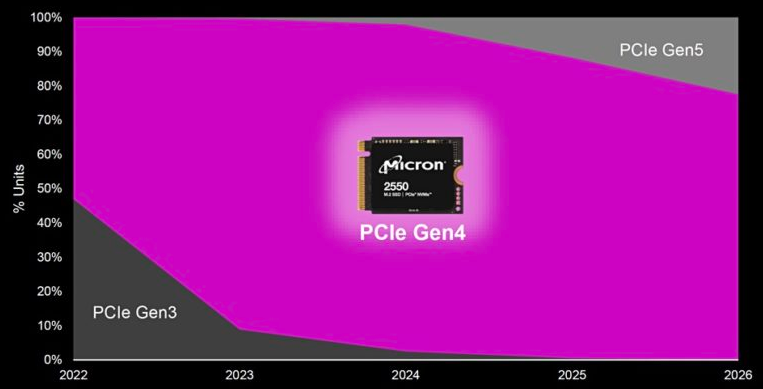News
Micron has introduced a new and improved 232-layer NVMe client SSD

Micron has introduced a 232-layer client SSD, making it the first 232-layer NAND following Yangtze Memory Technology to overcome the 200-layer barrier. The diskmaker believes the product will be successful because to its responsiveness and low power draw.
The NVMe drive 2250 has a PCIe 4 x 4 interface and is available in capacities of 256GB, 512GB, and 1TB. These capacities are the same as those offered by the 176-layer 2450, which came before it. PC and notebook OEMs have more choice in how they use it because to the fact that it has the same host memory buffer and M.2 format in three different sizes: 2280mm, 2242mm, and 2230mm.
A statement was made by Praveen Vaidyanathan, Vice President and General Manager of the Client Storage Group at Micron. He said, “With this SSD, we concentrated on creating an exceptional user experience for PC consumers.” Impressive application performance and exceptional power savings are delivered by [its] capabilities.

These cost reductions are really genuine. The power consumption of the current 2450 is approximately 3 milliwatts while it is sleeping and approximately 400 milliwatts when it is actively idle. The active read function uses approximately 5.5 watts of power. Micron has optimised the low power states of the q550, and as a result, it consumes less than 2.5 milliwatts of power when it is sleeping and less than 150 milliwatts when it is in an active idle power state. The power usage for active reading is approximately 5.5 watts. Because to this power reductions – which Micron attributes to an optimised entry into self-initiated low power modes – the battery life of notebooks will be extended.
The improvements in overall performance are also very real. The 2550 features a six-plane NAND die with a separate word line on each of the six planes, which enables concurrent reading to take place. In addition to that, its on-drive dynamic SLC cache benefits from predictive cache loading technology.
The maximum read bandwidth produced by the 2450 was up to 3.6 GBps, and the maximum write bandwidth was up to 3 GBps. These maximum figures are increased to 5GBps and 4GBps by the 2550, making them substantially quicker. Similar enhancements have been made to the maximum IOPS statistics, which have increased from the 2450’s 450,000/500,000 random read/write IOPS to the 2550’s 550,000/600,000, making it once again substantially quicker. According to Micron, its performance on the PCMark 10 storage performance benchmark is superior to that of its competitors:

It has the same endurance as the 2450, which is 256GB – 150TBW, 512GB – 300TBW, and 1TB – 600TBW, and it has a rating of 2 million hours for its mean time to failure (MTTF). On the basis of this, as well as the improvement in performance and power consumption over the 2450, it should find a favourable reception from the original equipment manufacturers (OEMs) of PCs and notebooks.
According to projections made by the research firm Forward Insights, Micron expects that PCIe 4 is going to become the SSD sweet spot over the next few years. Despite this, the company has not disclosed any plans for PCIe 5 client SSDs.













